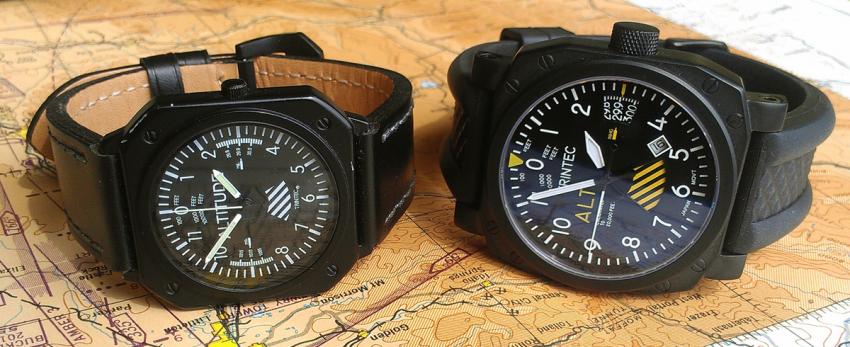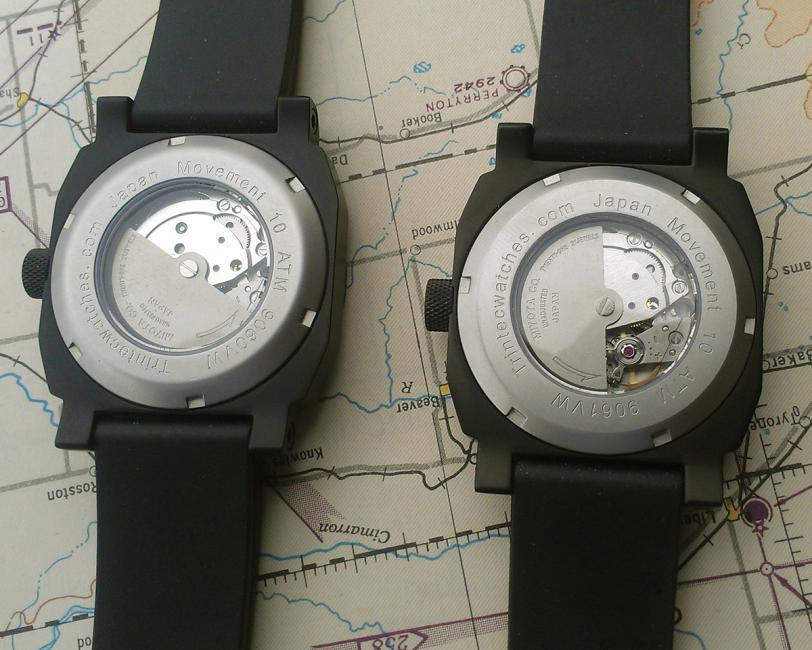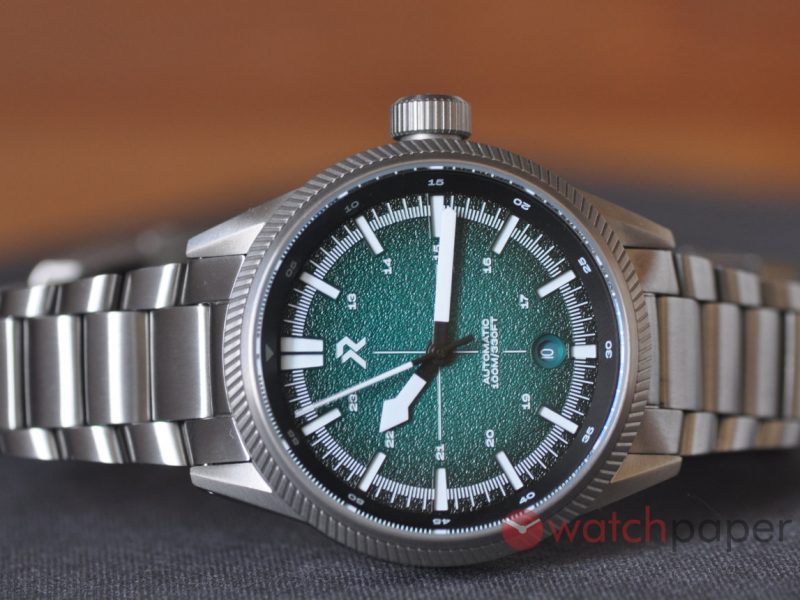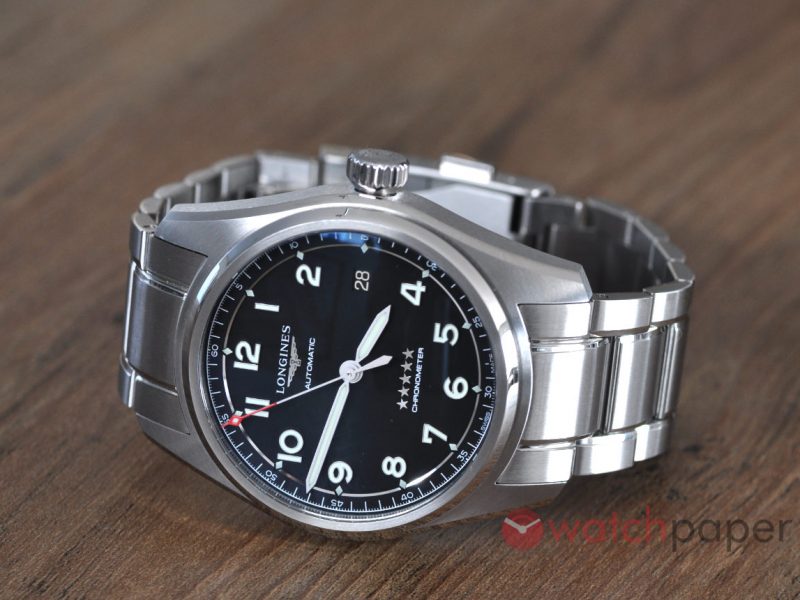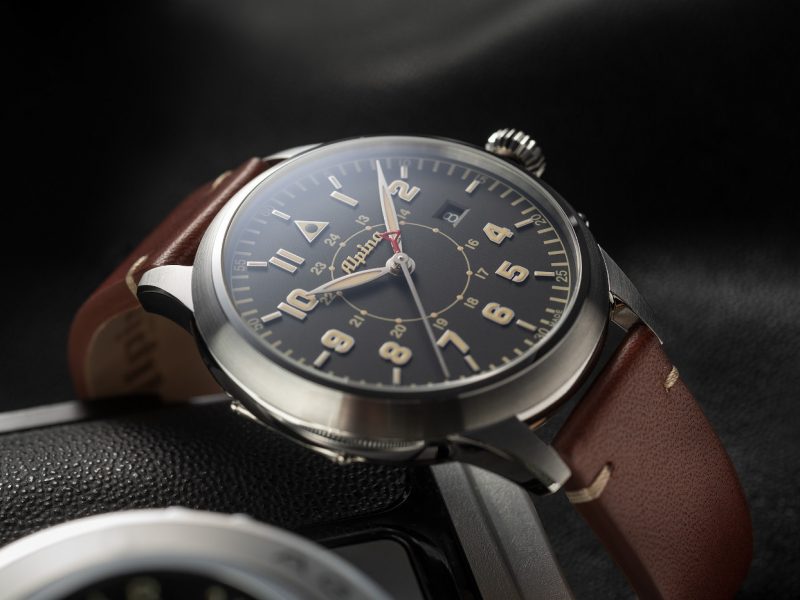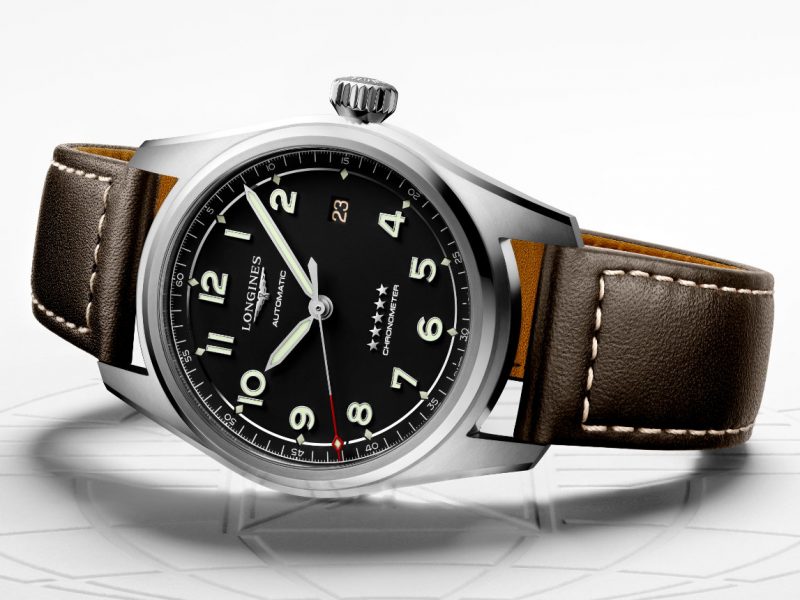Trintec — 30 years of aviation instrument inspired timekeeping — a “Made in Canada” story
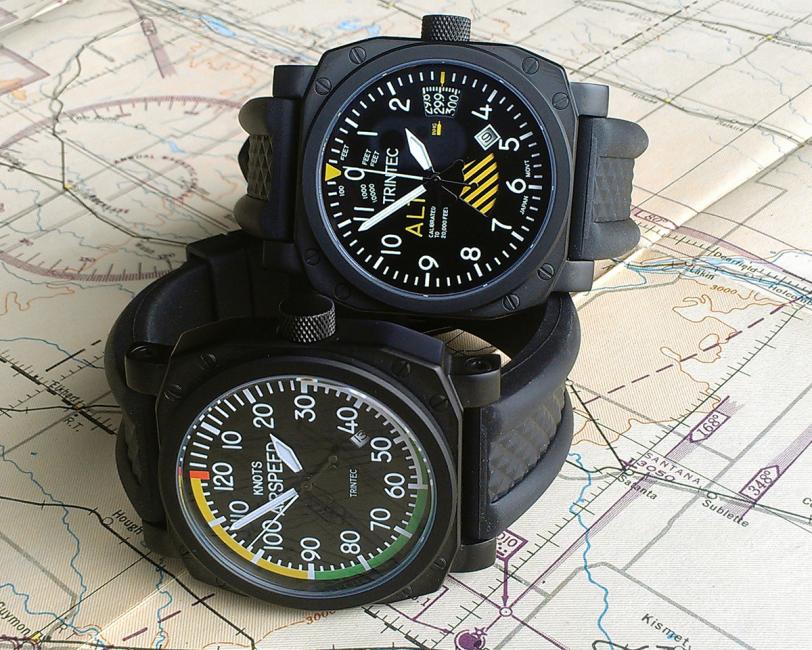
Trintec 30th Anniversary Special Edition Instrument Inspired Watches: the 9060SE Altimeter and the 9061SE Airspeed.
I discovered Trintec, trough their Kickstarter campaign to raise funds for their 30th anniversary instrument inspired aviation watches. The design looked familiar, but when I started reading their introductory text about their history, I knew this is the kind of story I would love to share with you.
We have to go back to July 18, 1984, when Brendon Nunes, founder of Trintec Industries, filled US Design Patenr D288,412 featuring a clock inspired by an aircraft altimeter. The patent was granted 1987 and it was this idea that was at the base of its 9060 Altimeter Watch, released in 1990, the first aircraft instrument inspired wristwatch.
I was curios to learn more about Trintec and Brandon was kind enough to take my call to answer my questions. Here is the transcript of our Q&A, where he talks about his passion for flying, the source of inspiration for the Altimeter clock, Kickstarter and business in Canada.
Enjoy!
Brandon, please tell me a bit about yourself, how did you got involved in aviation?
Ever since I was a very young child I wanted aviation to be part of my life. I always wanted to fly, at the age of five I was interested in flying, I wanted to become a pilot and this goal never really changed. I went all the way through school and high-school and the only thing I ever wanted to do was to become a pilot.
I moved to Canada from the island of Trinidad when I was 13, once I finished my high-school I started flight training. First, I did my private pilot’s licence, I started flying when I was 19, than I went out to the East Coast to the Moncton Flight Academy to pursue education, I did my commercial and multi-engine instrumental. I did all that and when I finished and I got all my certifications everybody in airlines was laying down pilots, Air Canada, at the time we had another airline, CP Air, everyone was dumping pilots by the hundred, so it was not a good time to pursue a job in aviation.
I worked at a hobby shop, with radio controlled airplanes and I managed one of their stores, in the mean time I was flying, I used to tow gliders at the club in Orangeville, Ontario. This way I was keeping my hands in aviation and while I was doing this, I came up with this crazy idea to do a clock that would appeal to aviation enthusiasts. In late ’83, I came up with this idea and I made a prototype of the Altimeter clock and I was very excited about it. I borrowed some money from my cousin, who was an airline captain at the time, to make this product. By 1984, I started to sell it and it did very, very well. That was the beginning of Trintec, I was making this one clock that was inspired by an aircraft altimeter.
I met a young lawyer who worked at a patent office and I told her about my idea, her recommendation was to protect it with a patent. I didn’t knew anything about it, but I applied for it and I got the patent on the Altimeter clock.
In that year, we hand made them, literally, by the end of the year we made the mould to be able to produce it in much larger quantities and the product took off and we just continued with other aviation products. By the time the aviation market opened up, it was very difficult for me to leave because I was so entrenched and so excited about the business.
Basically your idea for the Altimeter clock came while flying and looking at the board and you said, hey this could be a clock.
Actually the way it happened, I walked into a surplus store in Toronto and I found on the shelf for five dollars a Canadian Air Force used instrument from one of our fighters. I bought it, I took it home and it sat on my desk with all my other aviation stuff. I looked at it for weeks and weeks, that was my inspiration more than the cockpit, because I set and looked at that instrument thinking that this is such an interesting shape that it appeals to me and for sure it would appeal to other pilots too. Having it on my desk, gave me the idea to make into a clock. It wasn’t a clock, it was a directional gyro, with a nice shape, than I looked at the altimeter and it had two hands. Of course the altimeter doesn’t tell time, it reads in tens, thousands of feet and I rearranged the numbers to tell time, this was the unique twist that made it functional as a clock.
We made moulds, we made dies to cut the hands out and we had to get the dials printed, it was quite a fascinating journey back then, it was very exciting to me to make this product. Of course, I still have all the original tools and little pieces that I used to make it; it’s my own little museum.
That’s amazing! You should keep it; it’s the history of your company, the history of your brand. Now, coming to the new edition of the Altimeter, the original wrist watch was quartz and now it’s an automatic.
In 1990 it was a basic Miyota quartz movement and it had the same design elements as the clock. I had a friend who worked at Ryder Aviall Company and I told him about my plan to make a watch. He was very interested to use it as a promotion, that’s why you might see the Aviall watch on our website. We made the first batch of 200 for him and they used it as a promo tool within Ryder Aviall, which is still one of the world’s largest aviation parts distribution companies and we still do business with them today.
With the new model, we wanted to update, to keep up with time and to create a more high-end version of the original watch.
When we look at Kickstarter, we’ll usually find young companies, start-ups, yet you are an established company, what made you choose Kickstarter as a platform to launch this project?
It’s a fantastic way to launch a product. First of all, we have two new models, which have not yet been produced and it’s very difficult to know when you launch a product if it will succeed or not. I’m getting fantastic feedback from the Kickstarter community and I know the ratio of Altimeter to Airspeed that I need to make. If I didn’t had that information from Kickstarter, which is a new experience for me, I would have no idea how many to produce, it would be a wild guess.
I’ve been a member of Kickstarter since 2010 and I saw how it evolved. I started seeing more established companies using it to launch new products and I realized that we should try it too, to see how it works.
I’m not afraid to tell you that it’s very difficult to walk out there and get funding from banks. The business climate changed so much in this new world that I will use every opportunity to have direct access to the consumer and that’s what Kickstarter afforded us, direct access to consumers who can tell us what they want, how they want it and how much they want to pay for it.
Very interesting! I suppose you might use it in the future again, for other projects.
I will use it! I’m not afraid to say that. We’re getting exposure, literally, all over the world. People from every corner of the world are responding to my Kickstarter campaign: from Singapore to Ireland, to Sweden, to England, to Mexico and Argentina. We sell our products all over the world anyway, but this is a way to reach audiences that I could have not have reached before.
Your watches can be bought online, either via the Kickstarter or directly from your website. Are there any boutiques, B&M locations where people can see your watches?
We sell to a few jewelry stores here in Canada, I sell it through a distributor who will then resell them, and I don’t even have a list of the stores. Many retailers are online stores and pilot shops. We have a distributor in the Philippines; in Spain; we have someone in England; in France.
A lot of people might not know that we sold our products in France as early as 1993, before our rivals at Bell&Ross sold their first watch. In an online interview with an established watch forum Mr. Carlos Rosillo said that they didn’t started selling watches publicly until 1994. We were actually selling watches in France, before Bell & Ross ever sold to the public.
I guess this makes you proud, or angry, how do you feel?
It doesn’t make me proud; the only thing we are doing is to define our position, because some people are attacking us, telling that we’re knocking off our competitors. It’s plain that we have a preponderance of evidence to the contrary and it’s amazing that people will still argue that we didn’t create that. We have hard evidence to prove that we did this long before anyone else. We have published catalogs with our watches that went out to 3 million aviation enthusiasts in 1993. It’s hard to argue that.
What’s next after the 30th edition?
I have half-a-dozen design patents for case designs that we did not brought to market yet. We have ten years of watches to come and most of our watches will still be based on the aviation theme. We are sticking to this, aviation or sports watches, we’re not into luxury or gold.
I saw you have a collection of nautical instruments, any nautical watches on the horizon?
Well, I have ideas for nautical themed wristwatches, but not for the immediate future. Our Nautilus clocks are machined from scratch in-house and a lot of people not realize, but we make everything in Canada with the exception of our watches. All these products are made here, we inject our moulds, we do our tooling in-house, we print our dials, we laser engrave our dials for the nautical clocks, we machine the nautical cases.
Very few people know what we do. One of my marine dealers out on the East Coast, only found out last week that we make these clocks here in Canada. We were back ordering some of the high-end Nautilus clocks, which should be hundreds more than they are selling for, because they take many man-hours to machine them. When I told him we are making them right now, he said, what do you mean you are making them, you make those in Canada?
A few components come in, some of our bras cases, one or two of them come from China, some come from Germany — we use German barometer movements — but 80% of the components of the marine collection and 100% of our aviation line are made on our premises, with the exception of the watches. The movements for our aviation line come from the US. It really is a “Made in Canada” story, even if it’s not easy. We are here since 30 years and we hope to survive for another 30!
Yes, I wholeheartedly wish you that! Best of luck in the future and thank you very much for taking the time to share with us the fascinating story of Trintec!
The Kickstarter campaign is doing very well, at the time I’m typing up this story, Brendon is almost 30% over its target and might reach it’s stretch goal.
For all of you, fans of aviation pieces, this campaign is a great opportunity to let a pilot’s piece with a unique history land on your wrist.


